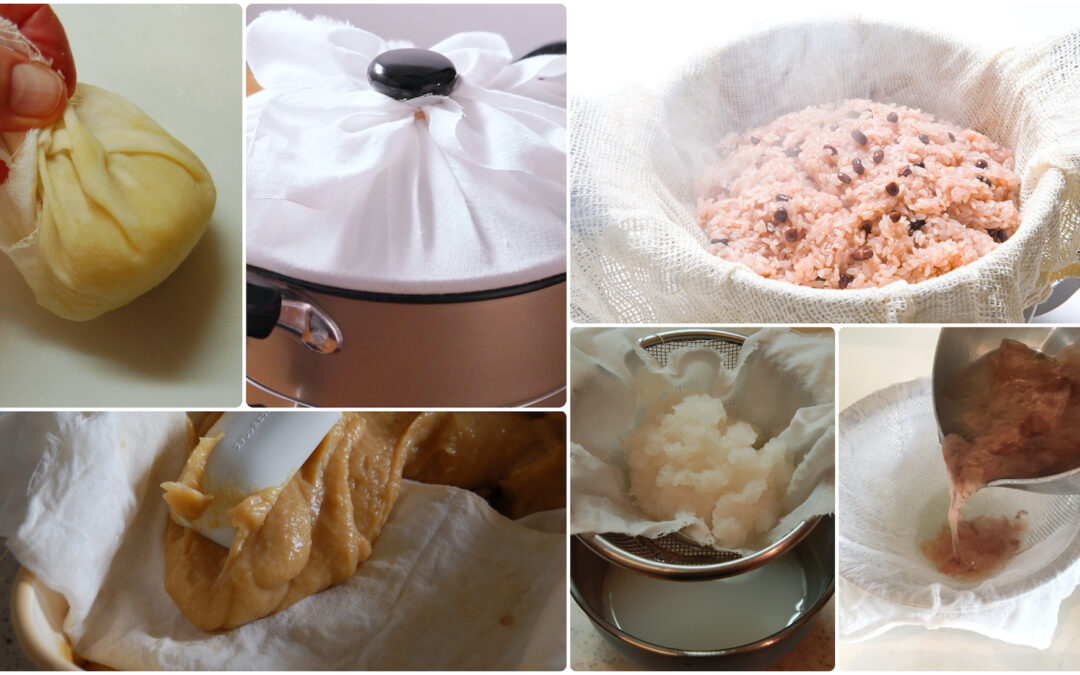
by Elizabeth Andoh | Feb 26, 2025 | Kitchen Culture, Tools & Techniques
Cloth is the work horse, and often unsung hero, of the kitchen. In the Japanese kitchen, cloth enables the cook to perform a wide range of tasks such as lining steamers, draining and straining, enveloping, and shaping. fukashi nuno 蒸し布 Cloths known as fukashi nuno 蒸し布...
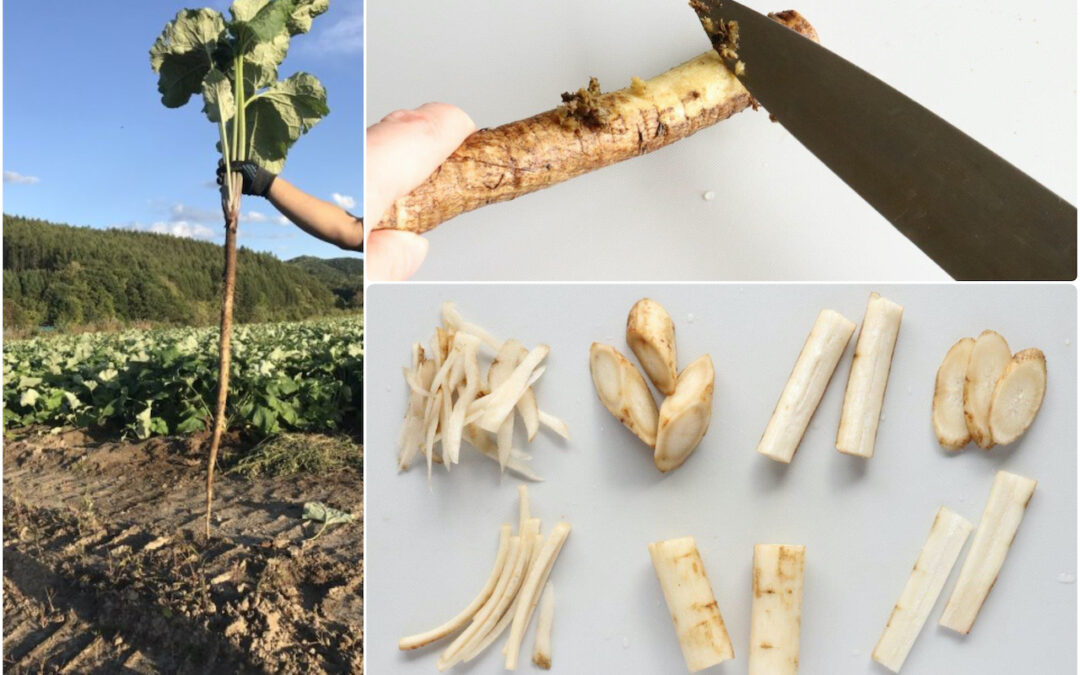
by Elizabeth Andoh | May 16, 2022 | Kitchen PROJECTS, Tools & Techniques
PROJECT Cutting & Slicing This Kitchen PROJECT is about cutting & slicing ingredients to maximize flavor, texture and appearance while minimizing waste. Specific examples below focus on gobō cut three different ways: SASAGAKI 笹掻きSENGIRI 千切りRANGIRI 乱切り These...
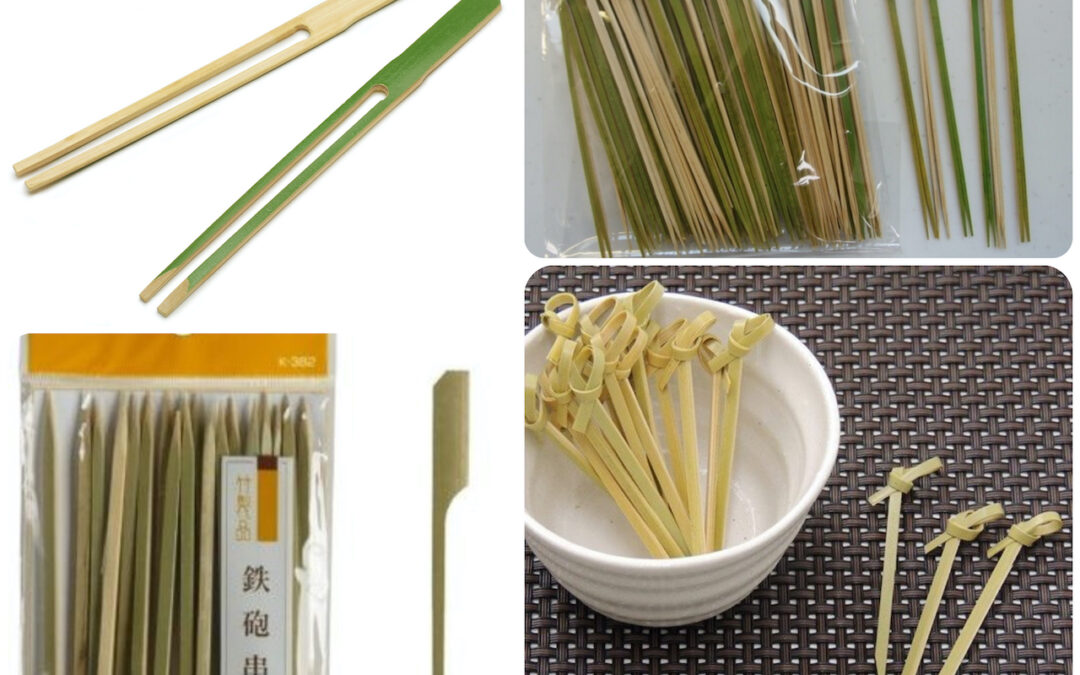
by Elizabeth Andoh | Mar 17, 2022 | Kitchen PROJECTS, Tabletop, Tools & Techniques, Year-Round
PROJECT Kushi This Kitchen PROJECT is about making SKEWERED FOOD in YOUR kitchen. For inspiration and recipes to get you started, use these resources: Black Sesame Miso Tōfu DengakuCrunchy Kushi AgéFuki no Tō Miso Dengaku(Vegan & Vegetarian Options) Oden Part...
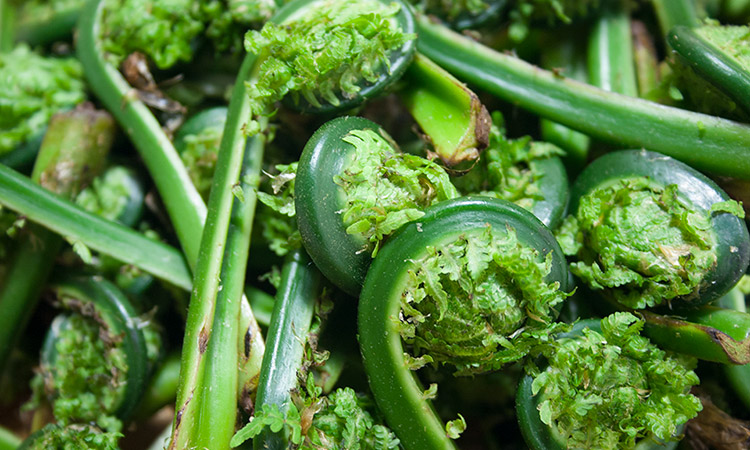
by Elizabeth Andoh | Feb 12, 2021 | Kitchen Culture, Tools & Techniques
KOGOMI こごみ・屈み Fiddlehead of the ostrich fern; Matteuccia struthiopteris What the Japanese call kogomi is commonly known in North America as fiddlehead ferns; they can be found in many parts of Canada, New England, the Midwest and the Pacific Northwest. In Japan,...
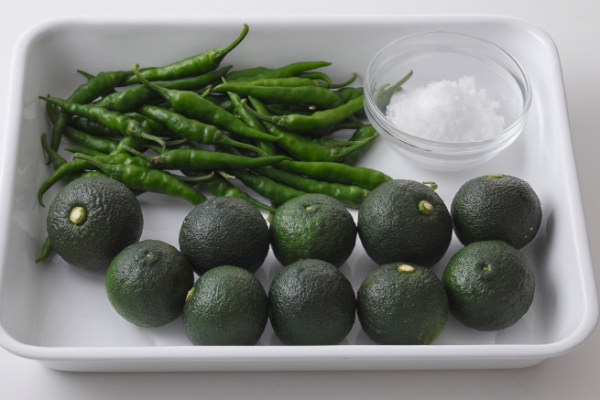
by Elizabeth Andoh | Sep 25, 2020 | Autumn, Kitchen Culture, Tools & Techniques
Yuzu Koshō 柚子胡椒 Mid-September…the heat of summer lingers on, but there is the promise of cooler autumn days ahead. That is when I typically see baskets of green yuzu in my Tokyo neighborhood markets and bags of green chili peppers, too. Within a month the yuzu...
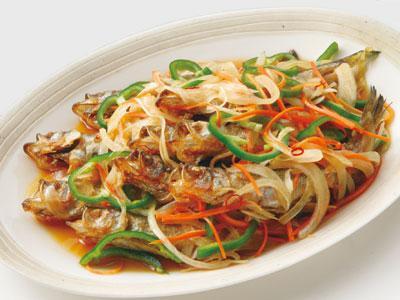
by Elizabeth Andoh | Sep 1, 2020 | Kitchen Culture, Tools & Techniques, Year-Round
NANBAN-ZUKÉ 南蛮漬け (Southern Barbarian Style Fried-and-Pickled Fish) NANBAN refers to the Portuguese, the “southern barbarians” who settled in the port of Nagasaki, Kyushu late in the 16th century. In addition to Christianity and trade, these early Portuguese visitors...
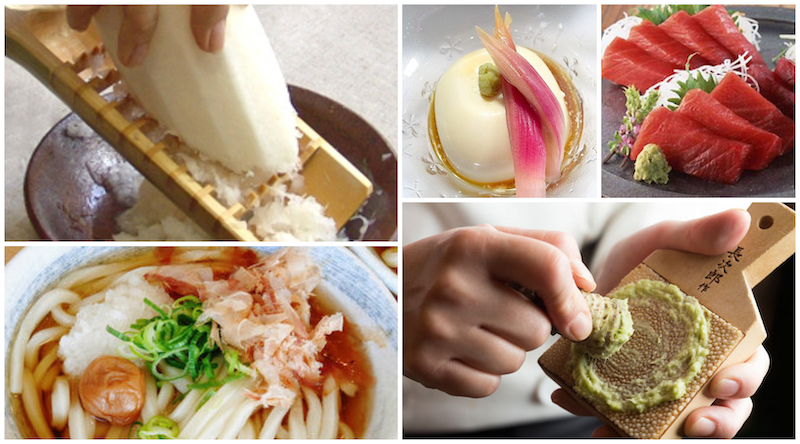
by Elizabeth Andoh | May 22, 2020 | Kitchen Culture, Tools & Techniques, Year-Round
The Japanese developed two very special graters for two specific foods: 鬼おろし機 oni oroshi ki (“monster graters”) made from bamboo used to coarsely grate daikon into shards and鮫の皮 samékawa graters made from nubbly sharkskin that transform tough, fibrous wasabi roots...
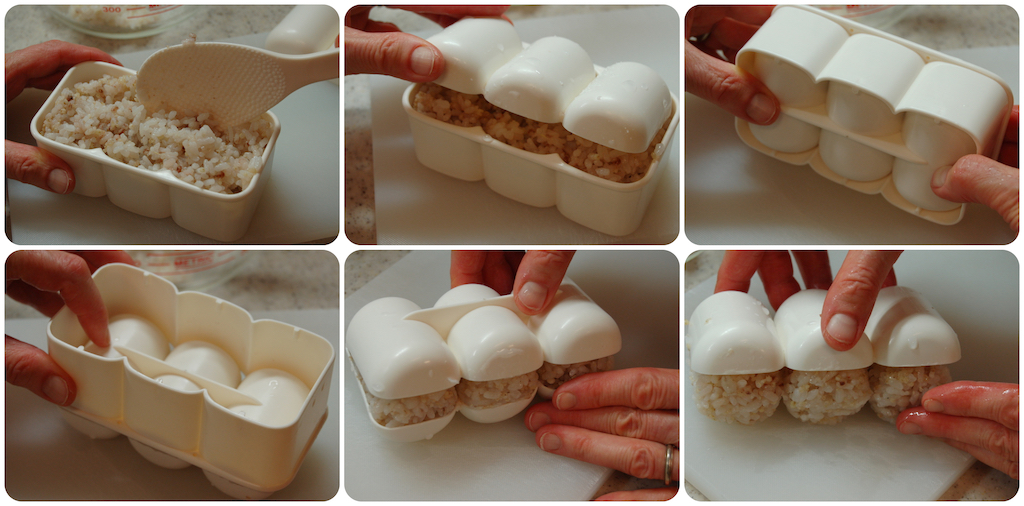
by Elizabeth Andoh | Apr 2, 2020 | Tools & Techniques, Year-Round
Making bale-shaped rice logs 俵型 TAWARA-GATA The Japanese often serve cooked rice at room temperature, packing it in obentō lunch boxes, or making it part of a buffet-like spread to feed a large crowd. At such times, the cooked rice is likely to be pressed, by hand or...
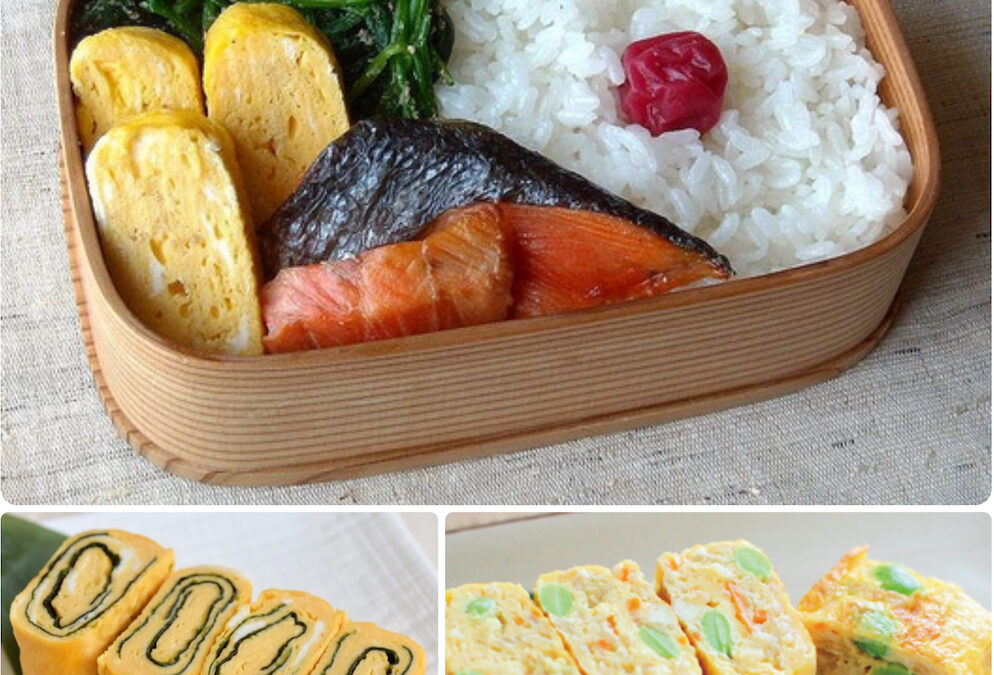
by Elizabeth Andoh | Mar 22, 2020 | Kitchen Culture, Tools & Techniques, Year-Round
Thick Rolled Omelet Atsu Tamago Yaki厚玉子焼き A classic in the washoku kitchen, thick, rolled omelets are made by cooking a seasoned egg mixture, layer by layer, in a pan – preferably a square or rectangular-shaped one. In and around Tokyo, the egg mixture is rather...
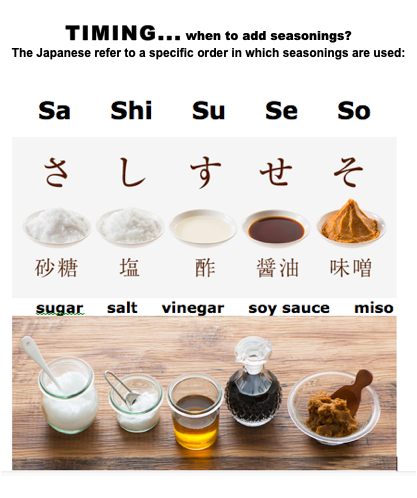
by Elizabeth Andoh | Mar 12, 2020 | Kitchen Culture, Tools & Techniques, Year-Round
Sa = sato (sugar); saké also begins with “sa”; Shi = shio (salt); Su = su (vinegar); Sé = sé is currently pronounced shō and stands for shōyu or soy sauce; So = miso The Japanese Culinary “Alphabet” To maximize flavor and achieve tenderness with minimal...
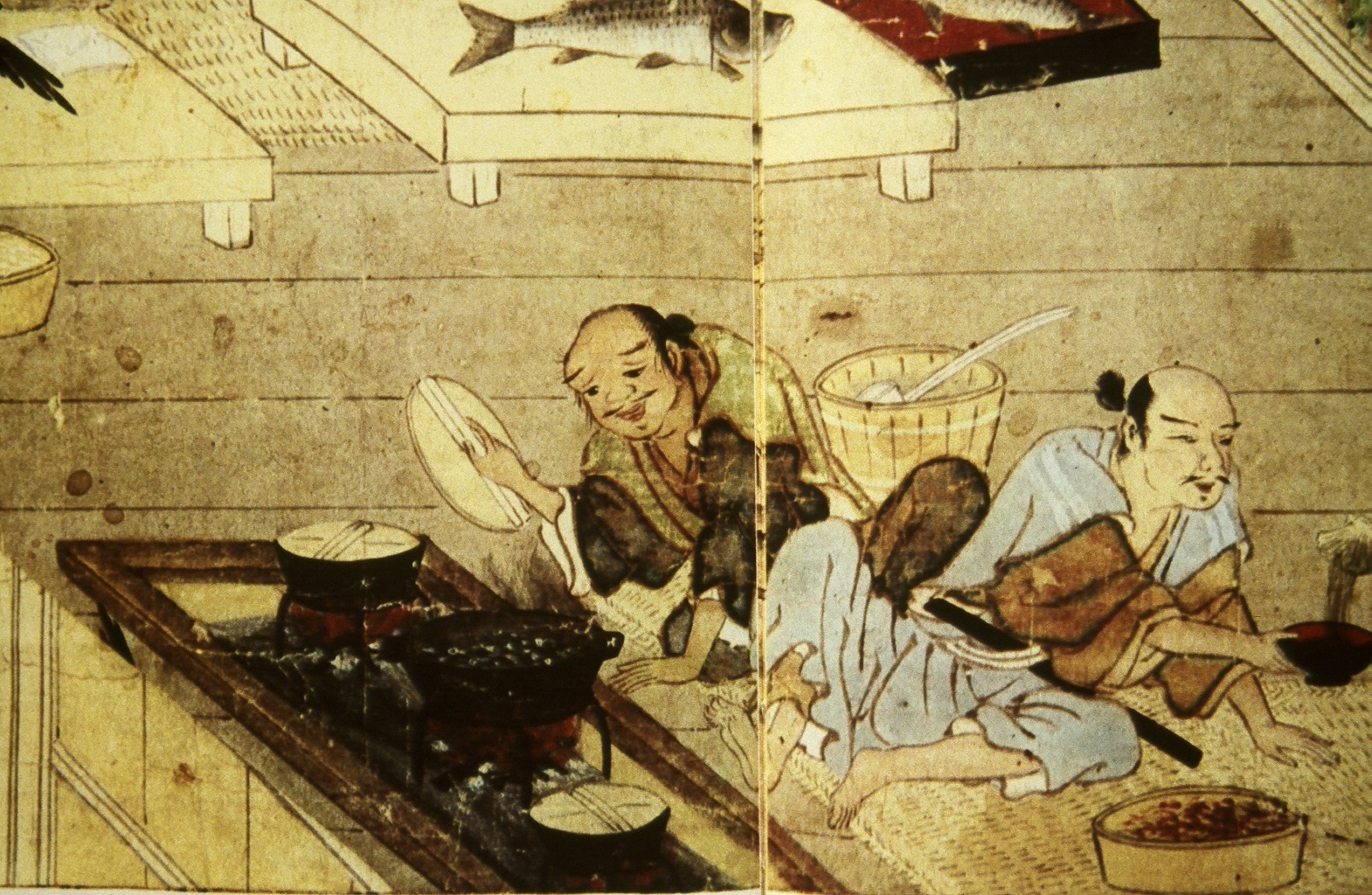
by Elizabeth Andoh | Jan 12, 2020 | Kitchen Culture, Tools & Techniques
16th century scroll (Shuhanron Emaki) 酒飯論絵巻 落し蓋 Otoshi-Buta Dropped Lids Used in Japanese kitchens for centuries for preparing nimono (simmered dishes), otoshi-buta lids drop down to sit directly on the food, rather than on the rim of a pot. Fuel-efficient as they...
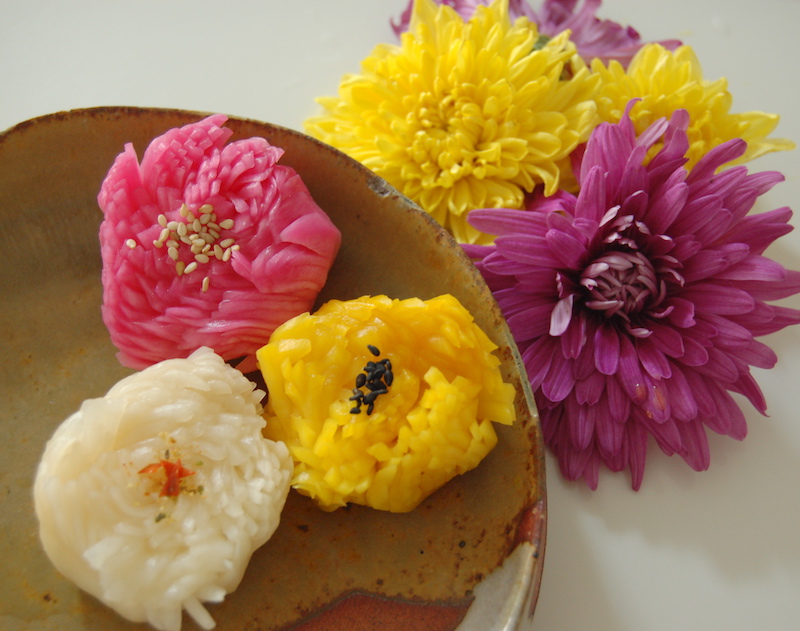
by Elizabeth Andoh | Nov 2, 2019 | Autumn, Kitchen Culture, Tools & Techniques
3-Colored Turnip Flowers 三色花蕪Sanshoku Hana Kabu Emblematic of Japan and its culture, chrysanthemums appear in many guises: as the exalted Imperial household crest (a special, layered 16-petal design), the “official” stamp of the Japanese government (passport cover),...













